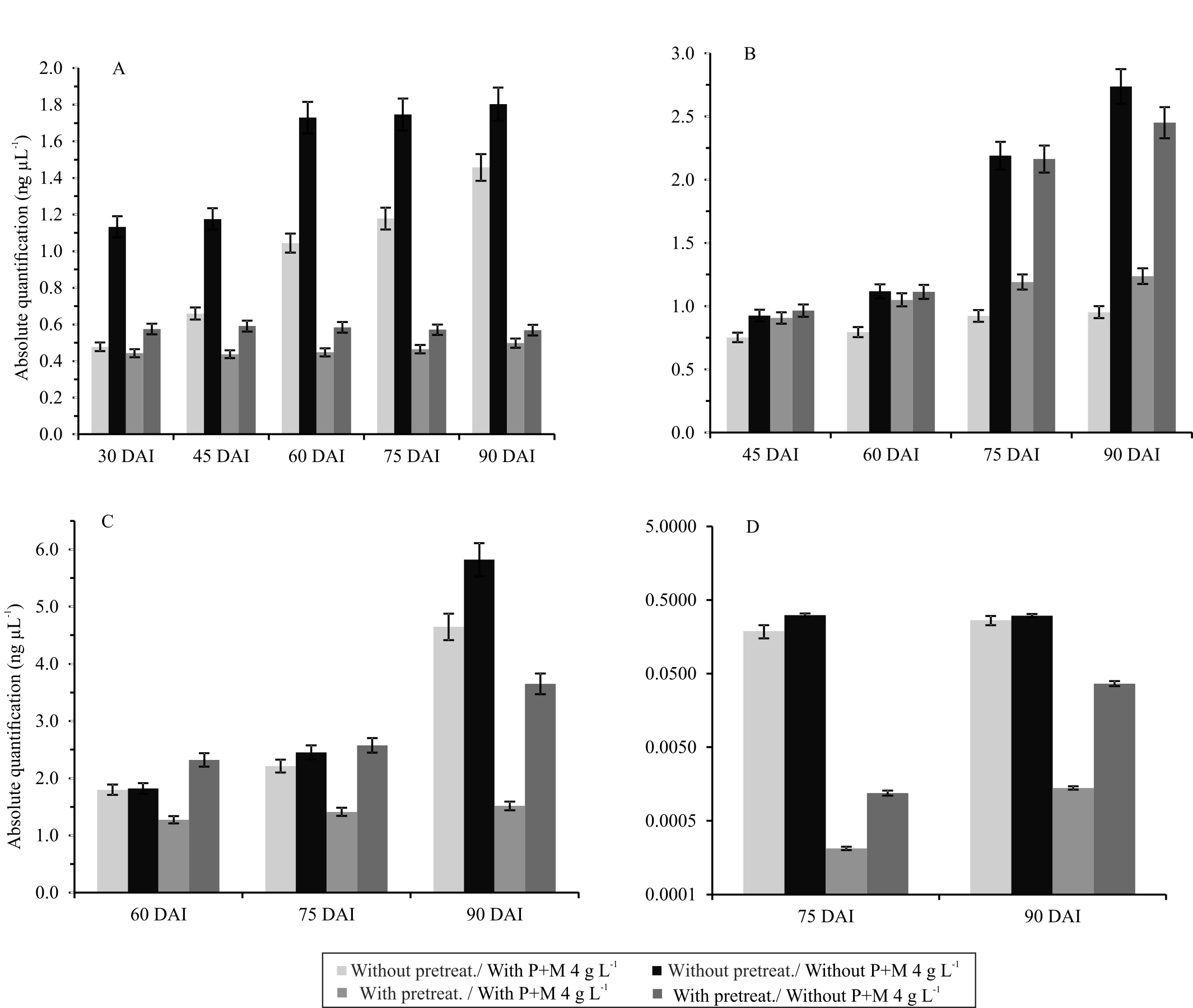Abstract:
The objective of this work was to evaluate the effect of fungicide application on the concentration of Tomato severe rugose virus (ToSRV, Begomovirus) in the 'Mariana' hybrid tomato coinfected with ToSRV and Tomato chlorosis virus (ToCV, Crinivirus) and the progression of viral concentration by qPCR, as well as to quantify fruit yield and quality. Experiment I consisted in the application of fungicides after sowing (pretreatment): pyraclostrobin+metiram (P+M) (at 3 g L-1) + boscalid (B) (at 0.3 g L-1), followed by biweekly sprayings with P+M (4 g L-1); in experiment II, there was no application at sowing (control treatment), only 4 g L-1 P+M biweekly. ToSRV and ToCV transmissions were performed using sweetpotato whiteflies (Bemisia tabaci, biotype B), at 15, 30, 45, 60, and 70 days after transplanting (DAT). There was an increase in yield, better fruit quality, and a reduction in the ToSRV concentration in the plants, when the viruses were transmitted late and pretreatment was performed. Tray pretreatment in sowing with P+M (3 g L-1) and B (0.3 g L-1), followed by biweekly sprayings with P+M (4 g L-1), increases fruit yield and quality in the 'Mariana' hybrid tomato coinfected at 45, 60, and 75 DAT by ToSRV and ToCV, and there is a reduction in the concentration of ToSRV.
Index terms:
Solanum lycopersicum; boscalid; metiram; pyraclostrobin; ToCV; ToSRV.

 Thumbnail
Thumbnail
